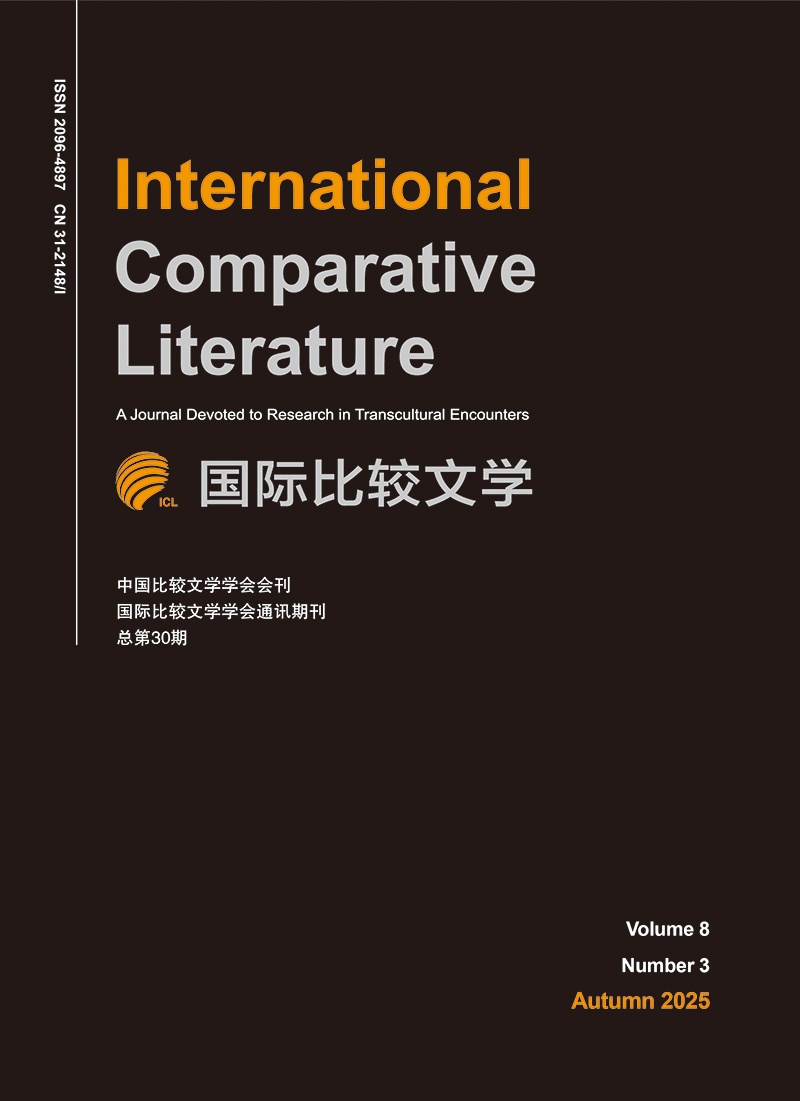|
[1]
|
Amasseh,Cyrus.“Art with the Aesthetics:Defining Conceptual and Post-Conceptual Art Practices.” Anistoriton:Journal
|
|
[2]
|
of History,Archaeology,Art History 12,no.1,(2010):1–7.
|
|
[3]
|
Bernstein,Charles.Pitch of Poetry.Chicago and London:The University of Chicago Press,2016.
|
|
[4]
|
——.Recalculating.Chicago and London:The University of Chicago Press,2013.
|
|
[5]
|
——.Attach of the Difficult Poems.Chicago and London:The University of Chicago Press,2011.
|
|
[6]
|
——.“Interview with Charles Bernstein.” By NIE Zhenzhao.Foreign Literature Studies 29,no.2(April 2007):10-19.
|
|
[7]
|
——.Girly Man.Chicago&London:The University of Chicago Press,2006.
|
|
[8]
|
Bernstein,Felix.Notes on Post-Conceptual Poetry.Los Angeles:Insert Blanc Press,2015.
|
|
[9]
|
CHANG,Chung-yuan.Creativity and Taoism:A Study of Chinese Philosophy Art and Poetry.New York:Harper Colophon
|
|
[10]
|
Books,1970.
|
|
[11]
|
Dandurand,Karen.“Saying Nothing...Sometimes Says the Most.” In Reading Emily Dickinson’s Letters:Critical Essays.
|
|
[12]
|
Edited by Jane Donahue Eberwein and Cindy MacKenzie.Amherst:University of Massachusetts Press,2009,80-99.
|
|
[13]
|
Dickinson,Emily.The Letters of Emily Dickinson.Cambridge,MA:Belknap Press of Harvard University Press,1958.
|
|
[14]
|
Fader,L.A.“D.T.Suzuki’s Contribution to the West.” In A Zen Life:D.T.Suzuki Remembered.Edited by Masao Abe and
|
|
[15]
|
John Weatherhill.Boston:Weatherhill,1986,95-108.
|
|
[16]
|
FENG Yi.“Entanglement of Echoes in Near/Miss.” Review of“Near/Miss,” by Charles Bernstein.English Language and
|
|
[17]
|
Literature 64,no.2(2018):299-305.
|
|
[18]
|
http://writing.upenn.edu/epc/authors/bernstein/reviews/Feng-Yi_Near-Miss.pdf.
|
|
[19]
|
Fetzer,Glenn W.Emmanuel Hocquard and the Poetics of Negative Modernity.Alabama and Birmingham:Summa
|
|
[20]
|
Publication,Inc.,2004.
|
|
[21]
|
Goldie,Peter,and Elisabeth Schellekens.Philosophy and Conceptual Art.Oxford:Clarendon Press,2007.
|
|
[22]
|
Lamarque,Peter.“The Uselessness of Art.” The Journal of Aesthetics and Art Criticism 68,no.3(2010):205.
|
|
[23]
|
Menning,Mario.“Kant and Taoism on Nothingness.” Journal of Chinese Philosophy 38,no.4(2011):556-68.
|
|
[24]
|
Moeller,Hans-Georg,and Lao Tzu.Taodejing (Laotzu):A Complete Translation and Commentary.Chicago,IL:Open
|
|
[25]
|
Court,2007.
|
|
[26]
|
Smith,Hazel.“Experimental Confessionalism:The Personal Turn in American Post-Conceptual Poetry.” In Cordite Poetry
|
|
[27]
|
Review,online ed.,2018.Accessed February 2,2019.http://cordite.org.ar/essays/experiental-confessionalism/2/.
|
|
[28]
|
Suzuki,D.T.“Wisdom in Emptiness.” In Selected Works of D.T.Suzuki.Vol III.Edited by Jeff Wilson and Tomoe Moriya.
|
|
[29]
|
California:University of California Press,2016,201-25.
|
|
[30]
|
Winkel,Camiel van.During the Exhibition the Gallery Will Be Closed:Contemporary Art and the Paradoxes of
|
|
[31]
|
Conceptualism.Amsterdam:Valiz,2012.
|
|
[32]
|
Winslow,Franklin.“Great Moments in Taches Blanches by Charles Bernstein.” Poem of the Month (blog).WordPress.
|
|
[33]
|
Accessed January 29,2019.
|
|
[34]
|
https://blogs.baruch.cuny.edu/poemofthemonth/2012/11/05/great-moments-in-taches-blanches-by-charles-bernstein/.
|
|
[35]
|
毛宣国:《中国古代“无”的哲学美学智慧及启示》,《求索》2006年第4期,第127—130页。
|
|
[36]
|
[MAO Xuanguo.“Zhongguo gudai‘ wu’ de zhexuemeixue zhihuiji qishi”(The Philosophical and Aesthetic Wisdom and
|
|
[37]
|
Insights in Chinese Traditional‘ Nothingness’).Qiusuo (Seeker)4(2006):127-30.]
|
|
[38]
|
宋世明:《为艺术而艺术:一场审美现代性的扩容运动》,《求是学刊》2006年第3期,第123页。
|
|
[39]
|
[SONG Shiming.“Weiyishu eryishu:yichang shenmeixiandaixingde kuorongyundong”(Art for Art’s Sake:An Expanding
|
|
[40]
|
Movement for Aesthetics Modernism).Qiushi xuekan (Seeking Truth)3(2006):123.]
|
|
[41]
|
叶维廉:《道家美学与西方文化》,北京:北京大学出版社,2002年。
|
|
[42]
|
[YIP Wai-Lim.Daojia meixue yu xifang wenhua (Daoism Aesthetics and Western Culture).Beijing:Beijing University
|
|
[43]
|
Press,2002.]
|

 点击查看大图
点击查看大图



 下载:
下载:

